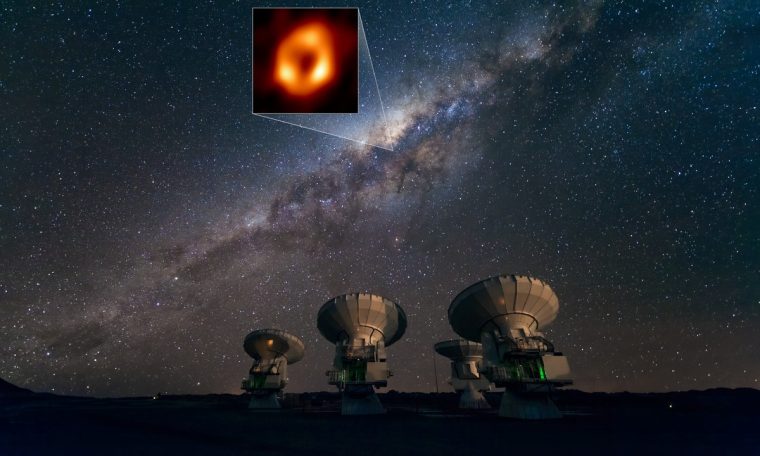
The world met on Thursday (12) First record of Sagittarius A*, the supermassive black hole at the center of the galaxy. It is a cosmic abyss that absorbs everything that comes to it, even light.
This image was taken by the Event Horizon Telescope, a project made up of 11 radio observatories distributed in 8 different locations around the world.
The location of the galaxy and its central black hole as seen by the ALMA telescope. – Photo: ESO/Jose Francisco Salgado (josefrancisco.org), EHT Collaboration
Without this international collaboration, an Earth-sized telescope would be needed to observe the contours of Sagittarius A*. This is what astrophysicist Thassa Storchi Bergman of the Federal University of Rio Grande do Sul says. The scientist became internationally known when he published a study providing evidence of a supermassive black hole.
- know more: What are Black Holes?
“In space, when you want to observe a small target, the smaller the target, the larger the antenna or telescope needs to be. To observe an orange on the Moon—that is, an angular diameter equal to the event horizon of a black hole.” – you need an antenna the size of Earth”, he says.
Thays also explains why the record made by the 11 observatories shows observed scientific evolution beyond the possibility of observing black holes.
“This technology is very sophisticated. There are a lot of computational challenges involved and all these observatories have to observe the same target at the same time and then combine all the signals. This is a major technical challenge that just got accomplished today.” is.”



